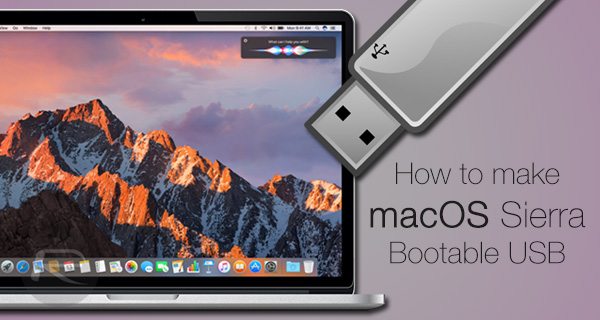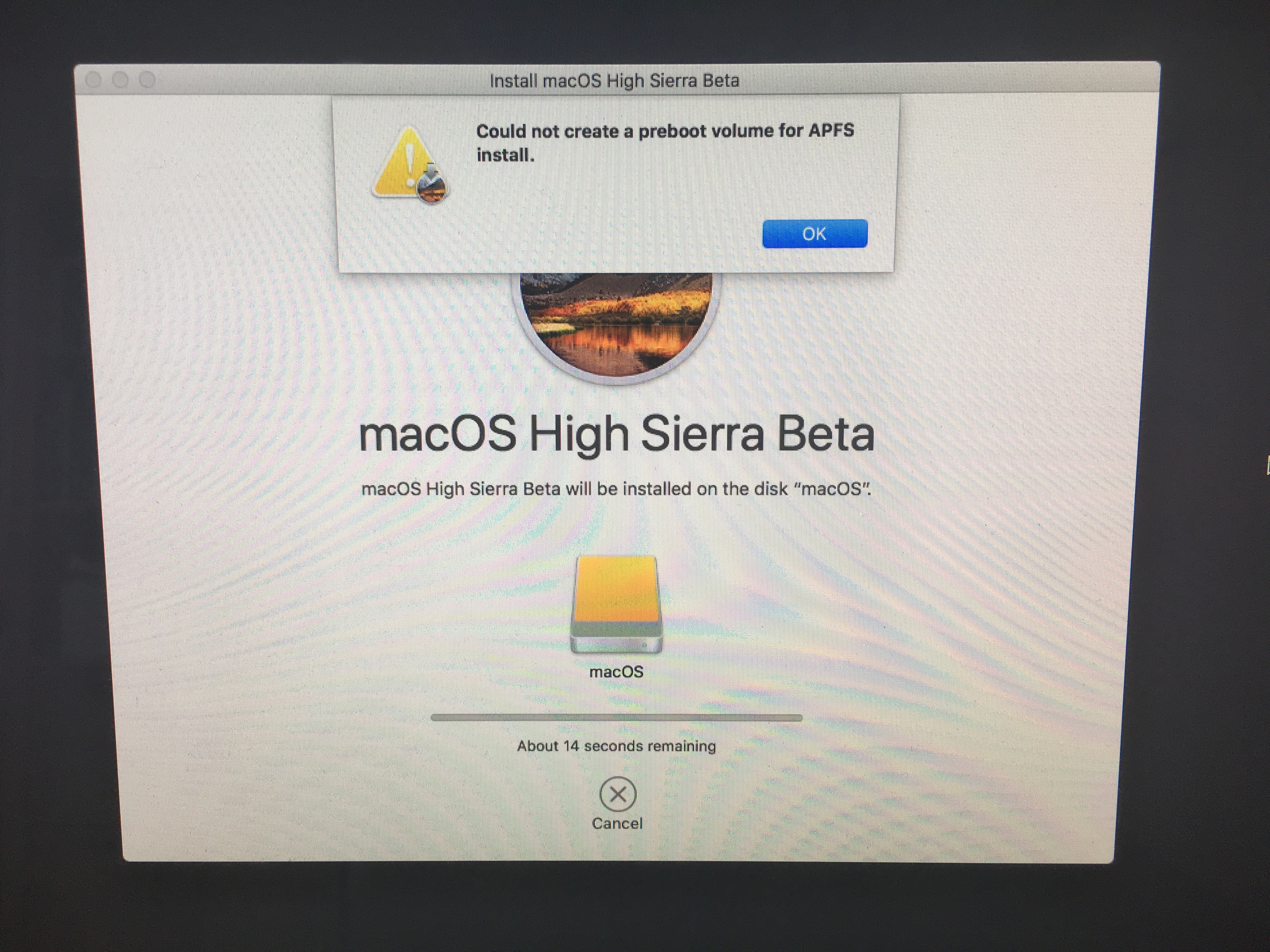Step 3: Install macOS on the external drive Open a finder window, go to Applications and find the Catalina of Big Sur beta installer (or whichever version of macOS. In the Disk Utility tab, select the external hard drive that is connected to the Mac, and then click on Erase at the top. Now rename it to something like sierra that you will remember, choose 'Mac OS Extended (Journaled)' in the format, and then click on Erase. Once the process completes, click on Done, and you are ready to begin the installation. If you booted from a functioning recovery partition, click the “Reinstall macOS” button. The installation process will begin. If you booted from an USB disk, click “Continue” to advance to the installer. You’ll be asked which hard drive you want to install to.
- Install Mac Os Sierra On External Drive For Pc Windows 7
- How To Perform A Clean Install Of MacOS Sierra
These advanced steps are primarily for system administrators and others who are familiar with the command line. You don't need a bootable installer to upgrade macOS or reinstall macOS, but it can be useful when you want to install on multiple computers without downloading the installer each time.
What you need to create a bootable installer
- A USB flash drive or other secondary volume, formatted as Mac OS Extended, with at least 12GB of available storage
- A downloaded installer for macOS Big Sur, Catalina, Mojave, High Sierra, or El Capitan
Download macOS
- Download: macOS Big Sur, macOS Catalina, macOS Mojave, or macOS High Sierra
These download to your Applications folder as an app named Install macOS [version name]. If the installer opens after downloading, quit it without continuing installation. To get the correct installer, download from a Mac that is using macOS Sierra 10.12.5 or later, or El Capitan 10.11.6. Enterprise administrators, please download from Apple, not a locally hosted software-update server. - Download: OS X El Capitan
This downloads as a disk image named InstallMacOSX.dmg. On a Mac that is compatible with El Capitan, open the disk image and run the installer within, named InstallMacOSX.pkg. It installs an app named Install OS X El Capitan into your Applications folder. You will create the bootable installer from this app, not from the disk image or .pkg installer.
Use the 'createinstallmedia' command in Terminal
- Connect the USB flash drive or other volume that you're using for the bootable installer.
- Open Terminal, which is in the Utilities folder of your Applications folder.
- Type or paste one of the following commands in Terminal. These assume that the installer is in your Applications folder, and MyVolume is the name of the USB flash drive or other volume you're using. If it has a different name, replace
MyVolumein these commands with the name of your volume.
Big Sur:*
Catalina:*
Mojave:*
High Sierra:*
El Capitan:
* If your Mac is using macOS Sierra or earlier, include the --applicationpath argument and installer path, similar to the way this is done in the command for El Capitan.
After typing the command:
- Press Return to enter the command.
- When prompted, type your administrator password and press Return again. Terminal doesn't show any characters as you type your password.
- When prompted, type
Yto confirm that you want to erase the volume, then press Return. Terminal shows the progress as the volume is erased. - After the volume is erased, you may see an alert that Terminal would like to access files on a removable volume. Click OK to allow the copy to proceed.
- When Terminal says that it's done, the volume will have the same name as the installer you downloaded, such as Install macOS Big Sur. You can now quit Terminal and eject the volume.
Use the bootable installer
Determine whether you're using a Mac with Apple silicon, then follow the appropriate steps:
Apple silicon
- Plug the bootable installer into a Mac that is connected to the internet and compatible with the version of macOS you're installing.
- Turn on your Mac and continue to hold the power button until you see the startup options window, which shows your bootable volumes and a gear icon labled Options.
- Select the volume containing the bootable installer, then click Continue.
- When the macOS installer opens, follow the onscreen instructions.
Intel processor

Install Mac Os Sierra On External Drive For Pc Windows 7
- Plug the bootable installer into a Mac that is connected to the internet and compatible with the version of macOS you're installing.
- Press and hold the Option (Alt) ⌥ key immediately after turning on or restarting your Mac.
- Release the Option key when you see a dark screen showing your bootable volumes.
- Select the volume containing the bootable installer. Then click the up arrow or press Return.
If you can't start up from the bootable installer, make sure that the External Boot setting in Startup Security Utility is set to allow booting from external media. - Choose your language, if prompted.
- Select Install macOS (or Install OS X) from the Utilities window, then click Continue and follow the onscreen instructions.
Learn more
For more information about the createinstallmedia command and the arguments that you can use with it, make sure that the macOS installer is in your Applications folder, then enter the appropriate path in Terminal:
- Big Sur: /Applications/Install macOS Big Sur.app/Contents/Resources/createinstallmedia
- Catalina: /Applications/Install macOS Catalina.app/Contents/Resources/createinstallmedia
- Mojave: /Applications/Install macOS Mojave.app/Contents/Resources/createinstallmedia
- High Sierra: /Applications/Install macOS High Sierra.app/Contents/Resources/createinstallmedia
- El Capitan: /Applications/Install OS X El Capitan.app/Contents/Resources/createinstallmedia
A bootable installer doesn't download macOS from the internet, but it does require an internet connection to get firmware and other information specific to the Mac model.
In this article, I will show you how to create macOS High Sierra Bootable USB Via Unibeast. However, if you want to install macOS High Sierra on any kind of computers such as Mac or PC. Therefore, you need a bootable USB to install the operating system, but there are lots of methods to create bootable USB for macOS High Sierra. However, I recommend you to use this method it can easily and comfortable for you. Moreover, if you don’t know how to install macOS High Sierra operating system on your Windows operating system, on VMware and VirtualBox therefore, you can see this article, which belongs to the installation of macOS High Sierra.
What is Unibeast?
UniBeast is a tool by MacMan and tonymacx86 to create a bootable USB drive from any Mac App Store purchased copy of OS X. This is an all-in-one bootable USB drive can also be used as a rescue boot drive for system recovery. However, without this tool, there is TransMac that you can use them on your Windows operating system. And more there are more tricks to create bootable USB for macOS High Sierra that you can use them.
Related:
Create macOS High Sierra Bootable USB

Step #1.Download the latest version of macOS High Sierra operating system from App store or Techsprobe.com.
Step #2.Download Unibeast for macOS High Sierra from tonymacx86. Before going to download you need to create an account on TonyMacx86 after that, the download link will appear on the list.
Step #3. Before to start the process of creating a bootable USB you need to insert the USB drive to your computer. Then navigate to search bar of macOS High Sierra, then type there DISK UTILITY, after that, click on erase button. Be aware that you are selected the Mac OS Extended (Journaled) from the format list. However, you need at least 8 GB USB Drive or more then it, it can be better.
Erase USB Drive
Step #4. After the erasing is completed, you will be notified that Erase process is complete, click Done to Continue.
Install Unibeast to create macOS High Sierra bootable USB
Step #5. After that, you erased the USB drive, Now open the Unibeast installer and click Continue.
Welcome to Unibeast Mac App Installer
Step #6. In the important information read all the information about Unibeast+Multibeast, and click Continue.
Step #7. In this step, to continue the installation software you must agree, to the terms of the software license agreement. Then click Continue then Agree.
Agree to terms and condition
Step #8. In this step, the erased USB drive will appear on the screen, you need to select this drive and click Continue.
Select a Destination
Step #9. In this step, select the installation type the DMG file of macOS High Sierra just click on Sierra and click Continue.
Step #10. In the step of bootloader configuration, select UEFI Boot mode and click Continue.
Bootloader configuration
Step #11. In this step, select inject NVIDIA from Graphics configuration and click Continue.
Graphics configuration
Step #12. In this step, don’t do anything simply click Continue.
Step #13. Before this step, you need to enter your username password to give the full permission. Then you need to wait for some seconds to copy the macOS High Sierra DMG file to the USB drive.
Copying files
Step #14. In this step, you will completely be done with creating macOS High Sierra Bootable USB so press Quit button to finish the installation of Unibeast.
Install Succeeded
Conclusion


How To Perform A Clean Install Of MacOS Sierra
That’s all about How to create macOS High Sierra Bootable USB Via UniBeast. Therefore, if you faced in any part of this process you can comment on the below comment box. However, subscribe to our website for getting the notification about our latest updates. And don’t forget to give us feedback for your more support.
